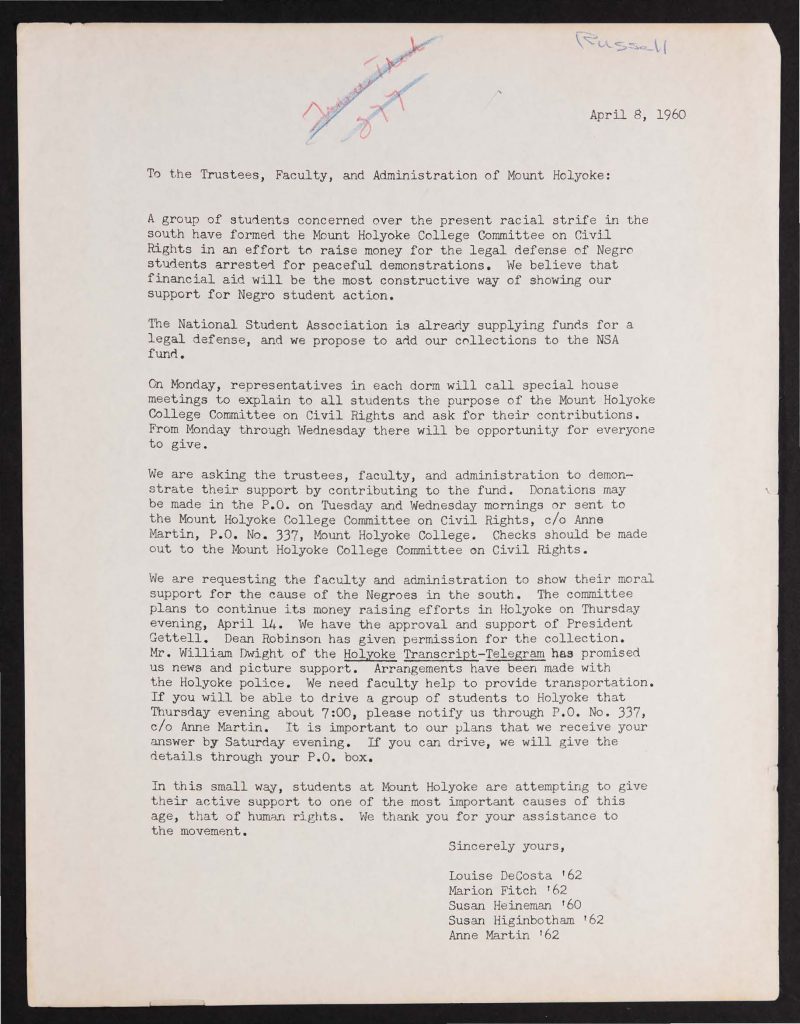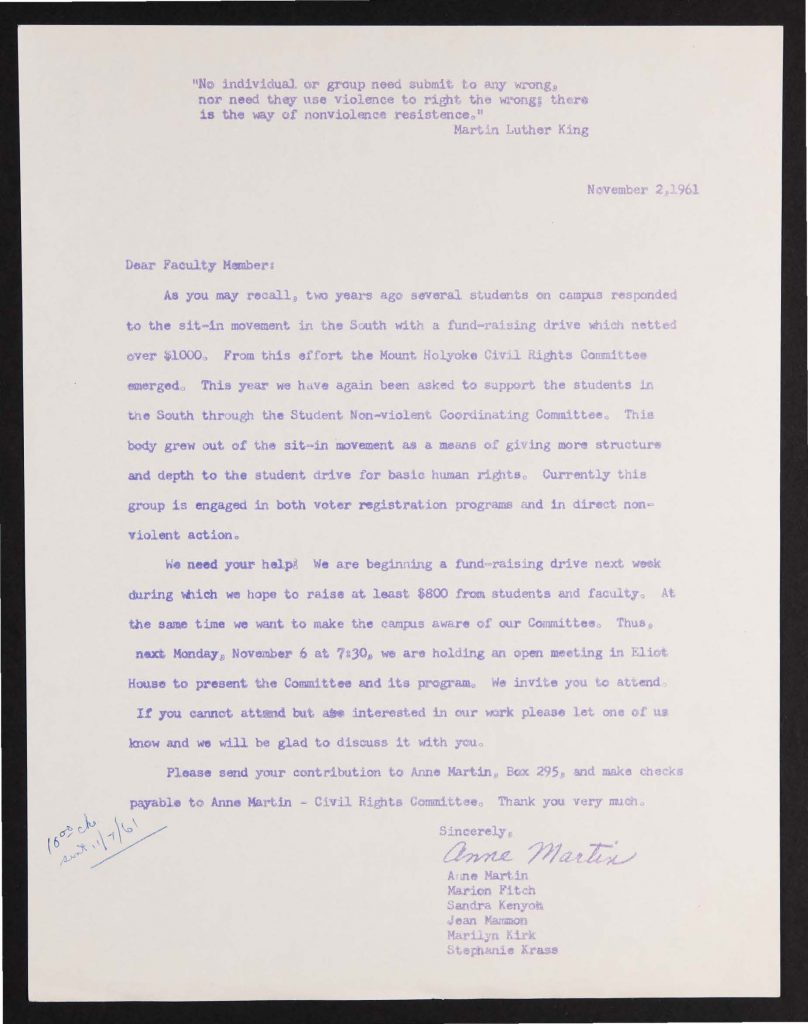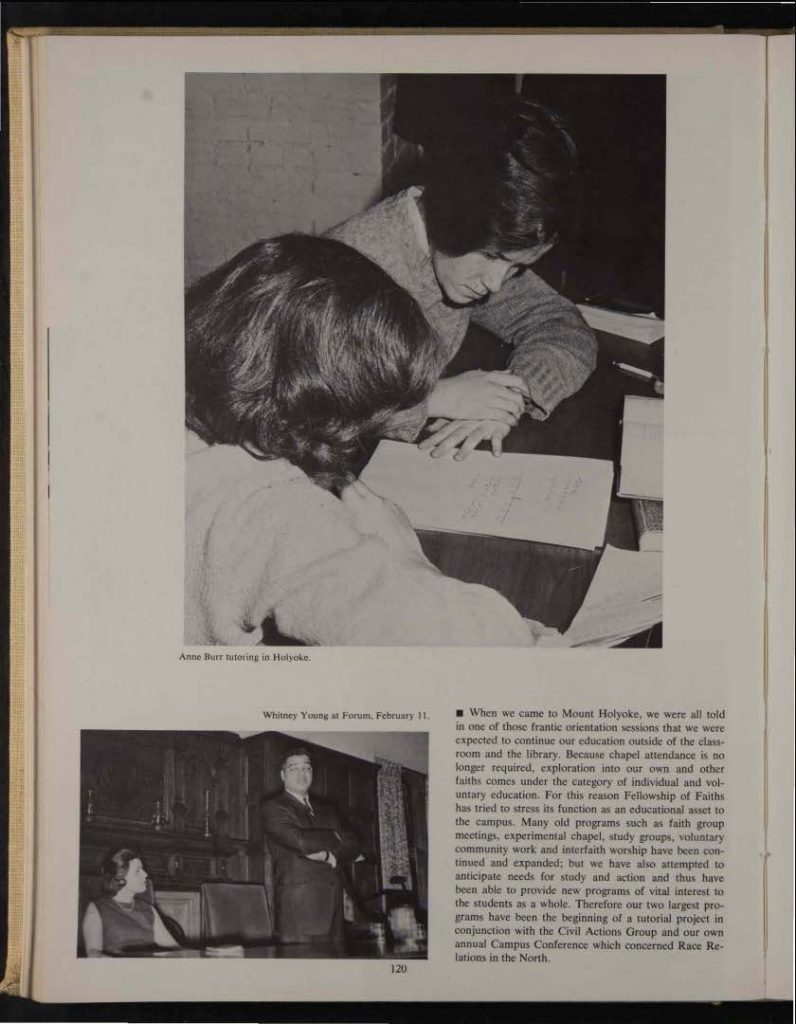Votes for Women Pins, ca. 1914-1918
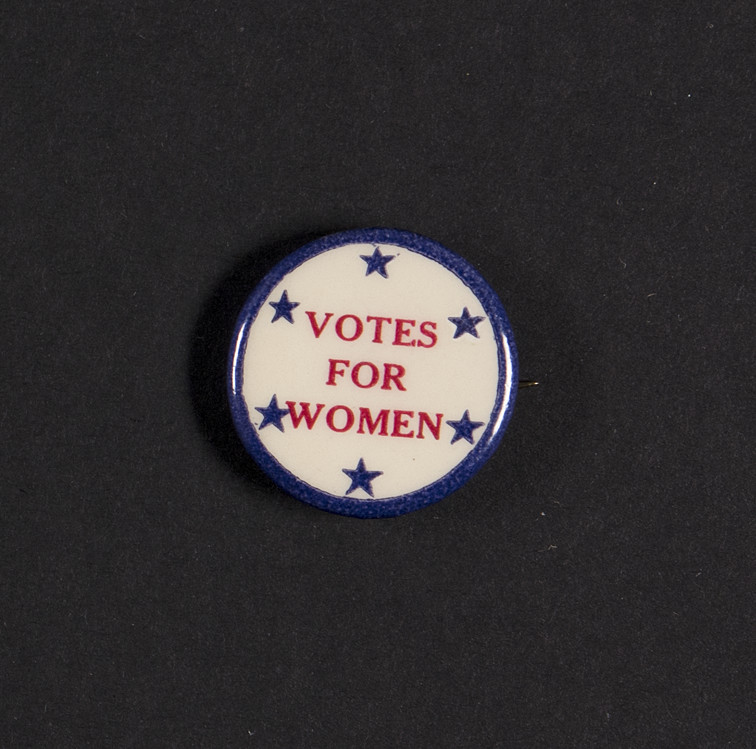
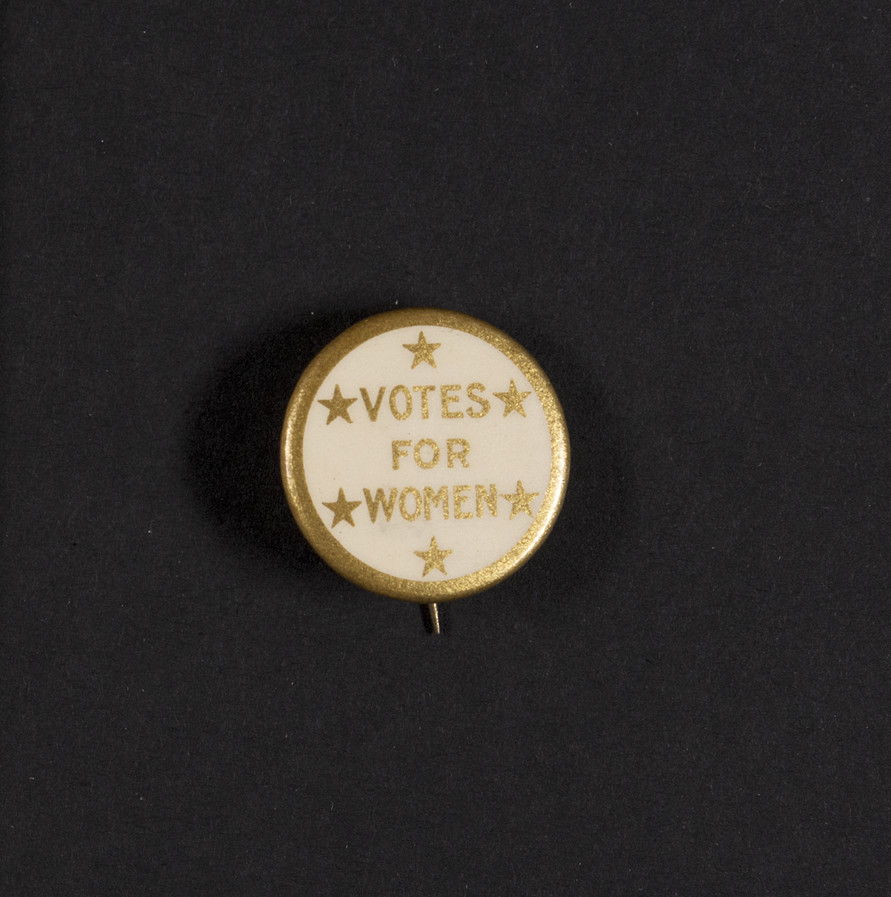
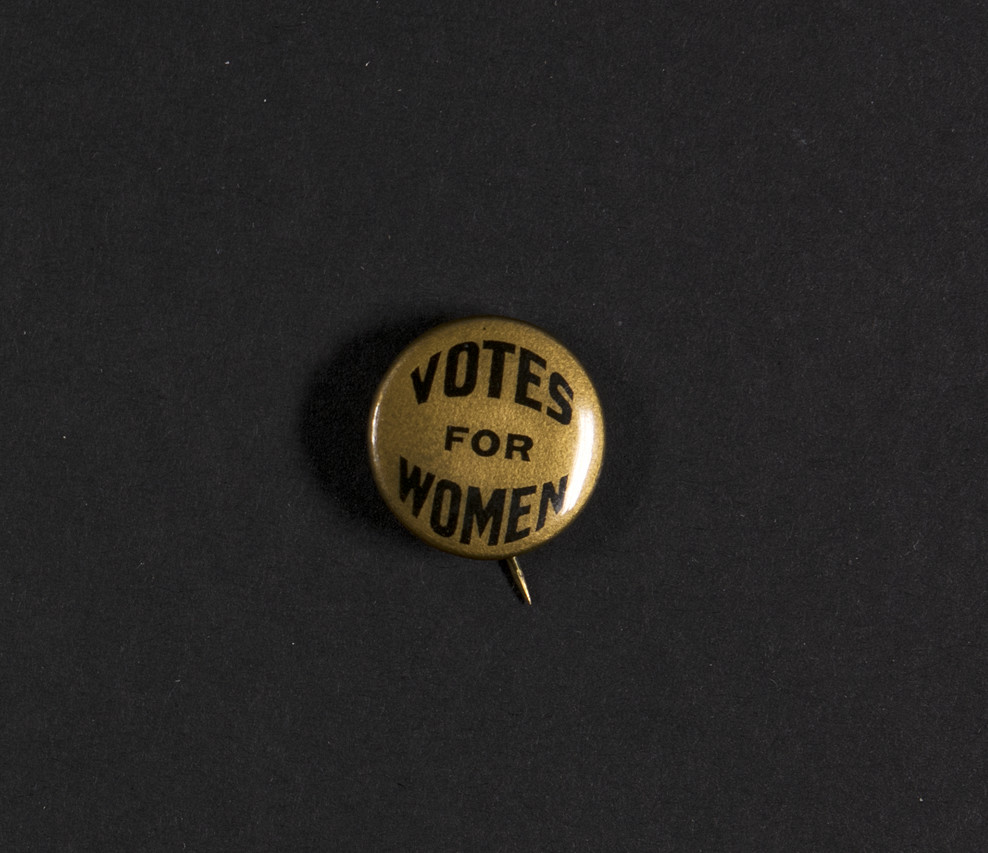
These Votes for Women pins are from (left to right) the memory books of Margaret Niles, Class of 1914, Madeline Wayne, Class of 1915, and Ruth Sonn, Class of 1918. The phrase “Votes for Women” was a common slogan used on suffrage ephemera and was often printed on objects such as postcards, pamphlets, and ribbons in addition to pins. Suffrage pins were often worn to show support for the cause—Ruth’s pin was displayed on her academic hood at her commencement ceremony.
Equal Suffrage League Page in the Class of 1917 Llamarada
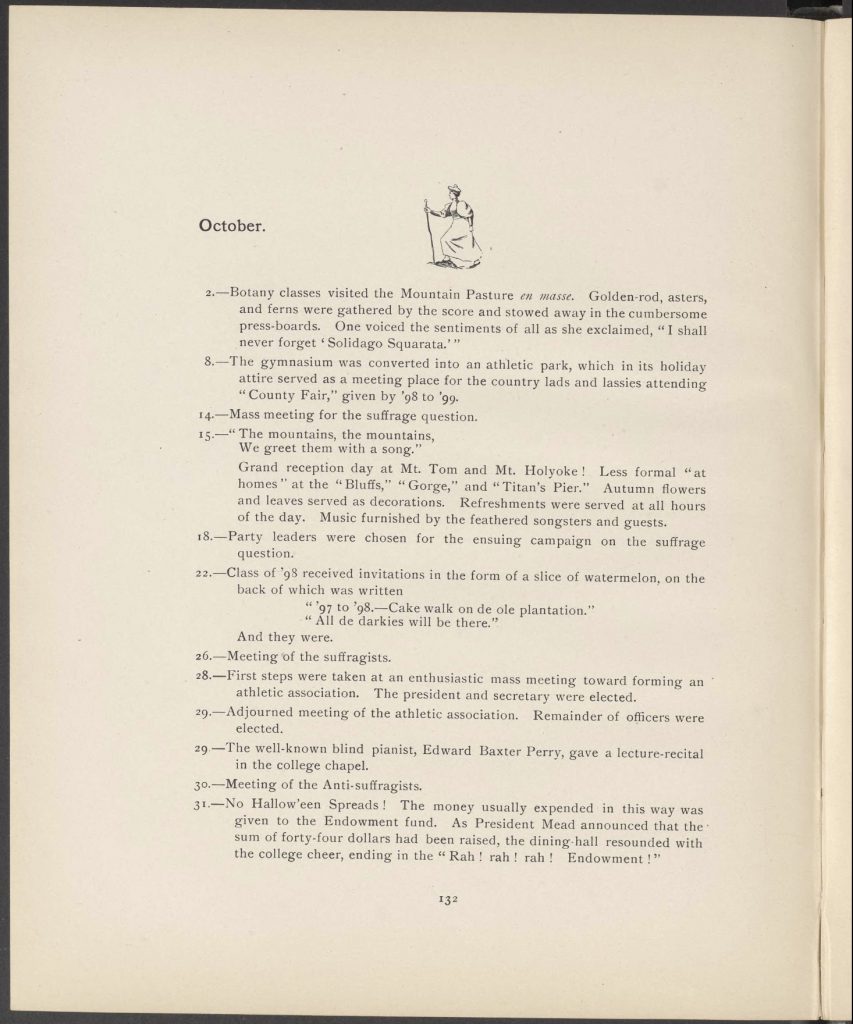
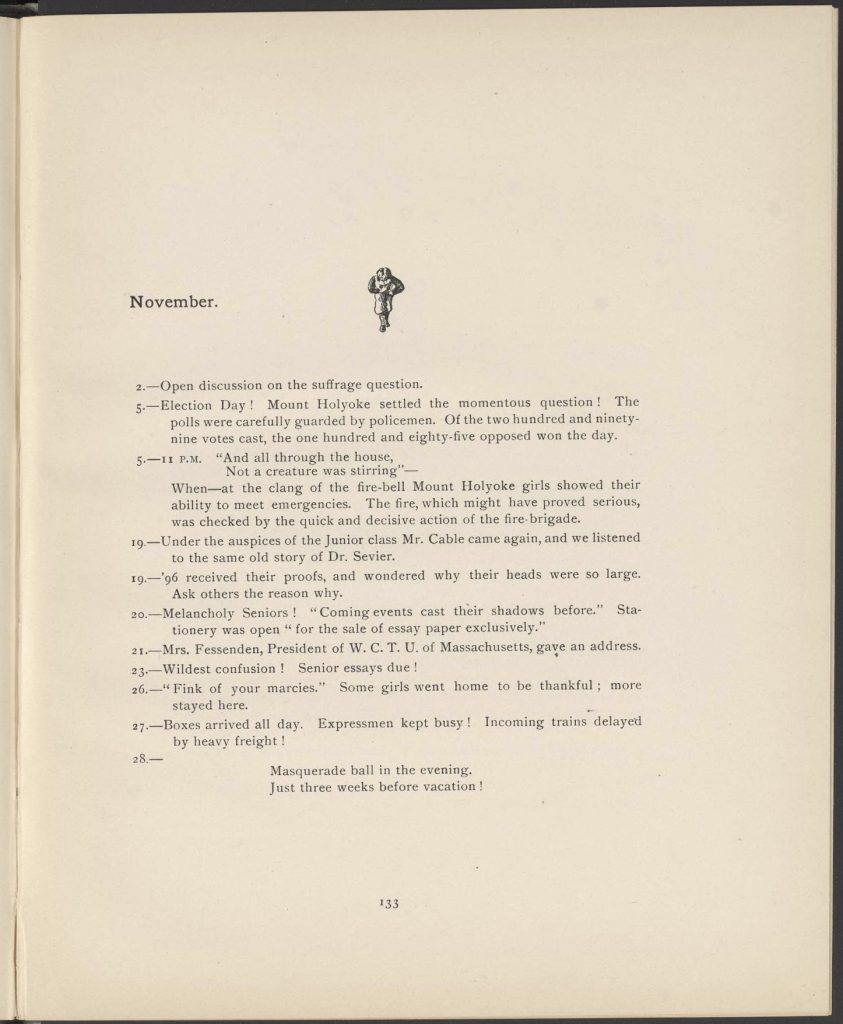
These yearbook pages give a brief history of the Mount Holyoke chapter of the National College Equal Suffrage League and details its activities. Through its open meetings, the League brought many important suffragists to speak on campus. Mentioned on this page are Dr. Anna Howard Shaw, who was the president of the National American Woman Suffrage Association from 1904 to 1915 and an advocate for non-militant tactics; Max Eastman, who was a male supporter of women’s suffrage and a prominent radical; and Susan Walker Fitzgerald, the recording secretary for NAWSA who was later elected to the Massachusetts House of Representatives. The membership numbers listed on this page show that more than a third of the student body belonged to the League, although this figure does not capture students who may have attended meetings without becoming official members.
Constitution for the Mount Holyoke Chapter of the National College Equal Suffrage League, 1911
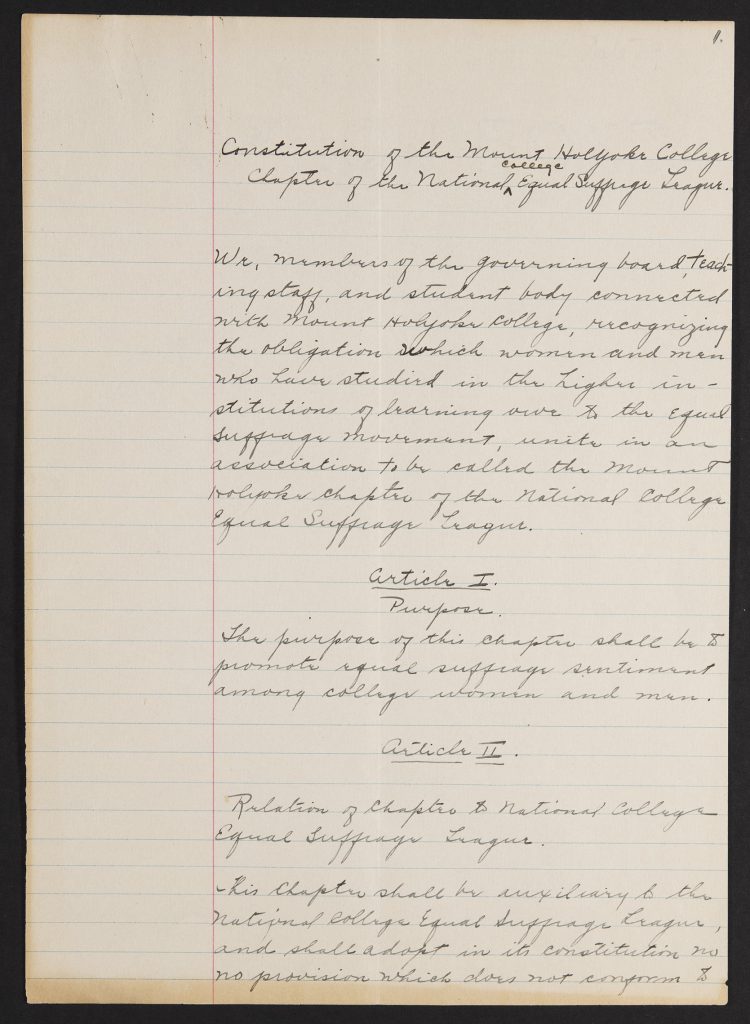
During the spring of 1911, Mount Holyoke students established a chapter of the National College Equal Suffrage League on campus. Slava Balanbanoff, x-Class of 1913, the first secretary-treasurer, hand-copied and signed the group’s constitution, which set up procedures for election of officers and delegates to the national council, specified eligibility requirements for membership to the chapter, and outlined a mission statement. Faculty and students were eligible for membership, provided that they paid a fee of 25¢ (equivalent to about $6 in 2019). The purpose of the club was “to promote equal suffrage sentiment among college women and men.”
Formation of MHC Committee on Civil Rights, 1960
In April 1960, Louise DeCosta, Class of 1962, Marion Fitch, Class of 1962, Susan Heineman, Class of 1960, Susan Higinbotham, Class of 1962, and Anne Martin, Class of 1962, wrote this letter to the administration of Mount Holyoke to declare the formation of the Mount Holyoke Committee on Civil Rights. The group’s main focus was collecting money to donate for the legal defenses of Black students who had been arrested during peaceful protests. In 1964, the Committee on Civil Rights encouraged students to participate in the nationwide Thanksgiving fast. The money that was saved on the meal was used to support African Americans who had lost their jobs or land due to their participation in civil rights activity. Within the first two weeks of its creation, the Committee on Civil Rights raised $750 (equivalent to about $6,500 in 2019) from students, faculty, and residents of Holyoke.
The Committee on Civil Rights Fundraising Letter, 1961
This letter shows that the Committee on Civil Rights worked with the Student Nonviolent Coordinating Committee in their fundraising efforts, specifically mentioning the group’s involvement in voter registration activism. Signed by the organizers of the group, it was sent to Ben L. Reid, who was a professor at the college. A note in pencil indicates that he sent the Committee a $10 check (equivalent to about $85 in 2019) on November 11th, 1961. Their stated goal was to raise $800 (equivalent to about $6,000 in 2019).
Fellowship of Faiths Page in the Class of 1964 Llamarada
The yearbook page for the Fellowship of Faiths (FOF) also discusses the efforts of the Civil Actions Group, an unofficial sub-group of the large interfaith organization on campus at the time. Both groups worked together on a tutorial program in Holyoke, and the FOF held a Campus Conference on Civil Rights, focussing on the subtle nature of racial discrimination in the North. Whitney Young, pictured at the bottom of the page on the left, was the executive director of the National Urban League, a community-based organization dedicated to ending racial discrimination, gave a lecture at the conference. Mount Holyoke and Amherst Students in Washington D.C., May 15, 1964 A group of Mount Holyoke and Amherst students went to Washington D.C. to lobby for the passage of the 1964 Civil Rights Bill. In this photo, they are shown with Senator Keating, a member of the House of Representatives. Keating was influential in enacting the Civil Rights Act of 1957.
“Actions’ Group Plans Service For Election Day,” The Mount Holyoke News, October 30, 1964
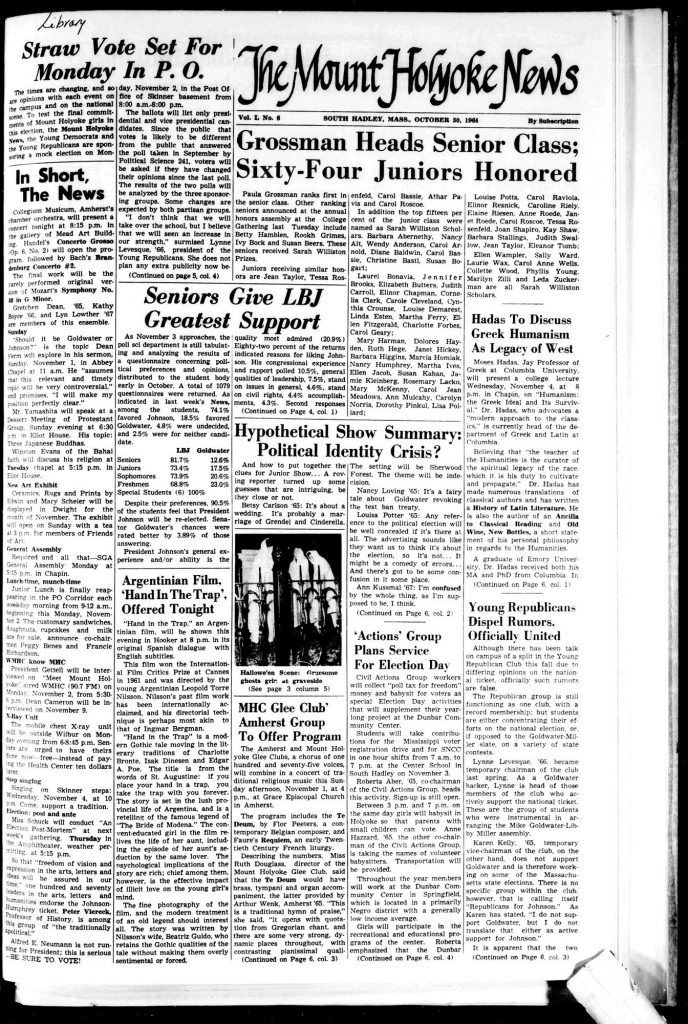
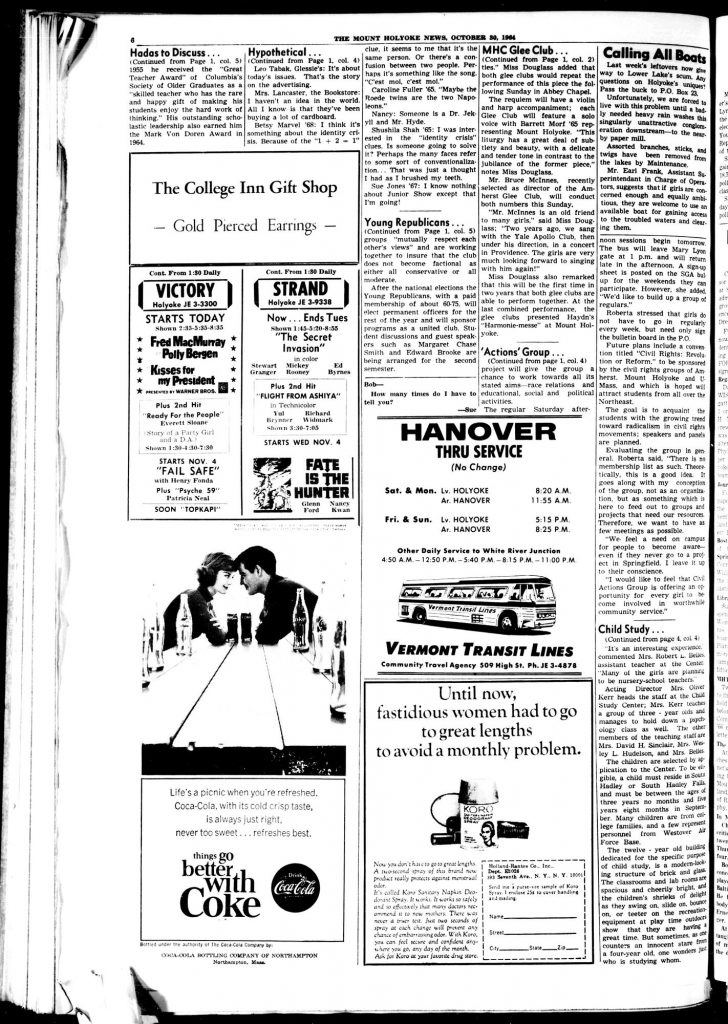
This article describes the Civil Actions Group’s Election Day initiatives in Springfield, as well as their long-term goals. Members of the group planned to raise “poll tax” money and babysit for voters—direct action that would impact the local community as well as people across the country. The money they received in the poll tax fundraiser would go to the Student Nonviolent Coordinating Committee, benefitting voters in Mississippi, which required its citizens to pay a fee of $2 (equivalent to about $16 in 2019) to register to vote. The Civil Actions Group had no membership list and required no formal commitment for going to Springfield each week, so it is hard to tell how many students participated, but, as stated in the article by co-chairman Roberta Aber, Class of 1965, it offered “an opportunity for every girl to become involved in worthwhile community service.”
